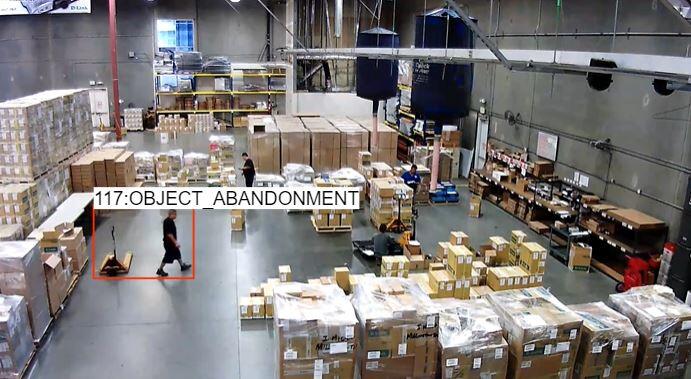January 17, 2022 11:51 am

COVID-19 disruption, supply chain issues and staff shortages have posed huge challenges to businesses in the manufacturing industry over the last two years.
As they look to recover, many are exploring how new technologies can help them adapt to the ‘new normal’.
Manufacturing and industrial settings have some unique safety and security requirements which cannot be compromised on, such as ensuring that protective clothing and equipment are worn by staff and visitors.
Other priorities for these firms include preventing unauthorised individuals accessing certain areas; minimising trips and falls; detecting smoke, fire or other hazards in large facilities; and protecting perimeters from intruders, including out of hours.
These issues cut across legal health and safety requirements as well as the preservation of business continuity, brand reputation and profits.
Heightened supervision improves safety at factories but is becoming more challenging, particularly in light of manpower shortages. It is expensive, difficult to scale, and an inefficient use of staff time. COVID-19 has also created the need for additional checks on mask-wearing, social distancing and crowding, further stretching existing resources.
Getting more from CCTV
CCTV helps to an extent but alone it is not enough.
A growing number of organisations are turning to advanced technology to get more from their existing video surveillance equipment. Using artificial intelligence (AI), behavioural recognition analytics systems, such as those from viisights, detect patterns of behaviour, events of interest and changes in ‘scene’.
They flag — in real-time — incidents where protective equipment is not being worn, an object is blocking an aisle or a worker has fallen. Designated personnel are immediately alerted to proactively help prevent the safety violation from happening or escalating further.
This eliminates the need for live supervisors to be glued to watching video monitors and drastically reduces the likelihood of a potentially harmful safety breach being missed – for example, during staff breaks or when they are distracted by other matters.
The true power of AI behavioural recognition technology can be seen in its ability to monitor a production process of people and/or vehicles and raise an instant alert if that process is violated — for example, if a worker picks up a box and leaves the production line or places it somewhere it shouldn’t go. This is an important new way to prevent potential safety risks and costly product defects. It demonstrates a level of complex situational understanding that legacy technologies cannot deliver.
How it works
The system uses machine learning to distinguish between common occurrences like a person tying their shoelaces versus falling to the ground, or items moving smoothly on a conveyor belt versus piling up. The same levels of intelligence can be applied to automatically detect vandalism, unauthorised vehicles, and even the difference between an individual brandishing a cell phone or a gun.
Conventional video security cameras and analytics are simply not capable of delivering such insights and at the scale required for industrial and manufacturing facilities.
Preserving human safety is paramount, but violations at industrial and manufacturing facilities are far-reaching beyond this. They can bring operations to a standstill. impacting production schedules, throughput and product deliveries for prolonged periods of time.
Now, more than ever, this is disruption that businesses cannot afford.